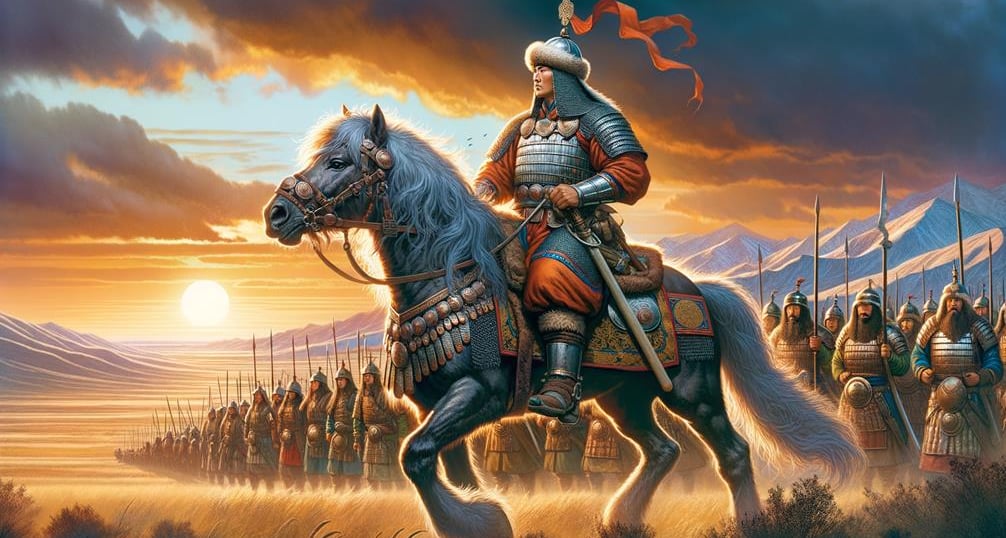The Rise and Fall of the Mongolian Empire's Monetary System: Key Dates, Leaders, and Lessons from Gold and Silver Usage
EDUCATION ON GOLD & SILVER


The Rise of the Mongolian Empire's Monetary System: Key Dates and Leaders
The inception of the Mongolian Empire's monetary system can be traced back to the early 13th century, a pivotal period marked by the rise of Genghis Khan in 1206. Genghis Khan's unification of the Mongol tribes laid the foundation for an expansive empire that stretched across vast territories and required a standardized monetary system to facilitate trade and economic stability.
One of the most significant innovations in the Mongolian Empire's monetary system occurred under the leadership of Ogedei Khan, Genghis Khan’s third son, who ascended to power in 1229. Recognizing the need for a robust economic framework, Ogedei Khan implemented a series of reforms that included the introduction of the empire's first standardized currency. Under his rule, a monetary structure emerged that employed both coins and paper money, broadening the scope and efficiency of trade activities across the empire.
The strategic placement of the Mongolian Empire along the Silk Road further underscored the necessity for a reliable monetary system. This vast trade network, connecting the East and West, facilitated the exchange of goods, ideas, and culture. However, the seamless operation of such extensive trade routes required a stable and universally accepted currency. The use of coins made of gold and silver, alongside the innovation of paper money, became instrumental in enabling merchants to transact efficiently and securely over long distances.
Additionally, Ogedei Khan's economic policies fostered a favorable environment for trade. The issuance of standardized coins and the establishment of paper money not only enhanced internal trade but also linked the Mongolian Empire with other civilizations, reinforcing the empire's economic dominance. This period of economic growth showcased the pivotal role of a well-structured monetary system in supporting the empire’s expansion and prosperity.
In conclusion, the early development of the Mongolian Empire's monetary system, significantly influenced by key dates and transformative leaders like Genghis Khan and Ogedei Khan, underscored the essential role of a standardized monetary framework in the flourishing trade activities along the Silk Road.
```htmlThe Progression and Peak of the Mongolian Monetary System
During the height of the Mongolian Empire, the monetary system saw significant advancements and transformations, culminating in the introduction of paper money under Kublai Khan in 1260. This revolutionary step changed the face of economic transactions within the expansive empire, allowing for greater ease of trade and commerce over vast distances. Kublai Khan's paper money, termed "Chao," was backed by precious metals and was mandatory for transactions, resulting in widespread adoption.
The paper currency was a testament to the Mongolian Empire's sophisticated economic strategy and its ability to integrate various cultures and economies under a unified system. The empire's extensive trade networks, which connected with other significant empires such as the Yuan Dynasty in China and the Ilkhanate in Persia, played a pivotal role in spreading the influence of Mongolian monetary practices. These trade relations not only facilitated the exchange of goods but also the flow of monetary innovations and ideas.
Gold and silver remained integral to the empire's economy, serving as both a store of value and a medium of exchange. The Mongolian control over major trade routes, including the Silk Road, ensured a steady supply of these precious metals, thereby sustaining economic stability and growth. The efficient use of gold and silver enabled the empire to conduct large-scale transactions and manage state expenditures effectively. These metals also served as a global standard, thereby easing trade with other nations that valued them equally.
The strategic use of these precious metals and the pioneering introduction of paper money were instrumental in the economic fortitude the Mongolian Empire enjoyed at its zenith. By managing its resources astutely and leveraging its geopolitical prowess, the empire demonstrated remarkable adaptability and resilience within its monetary system.
```The Decline and Lessons of the Mongolian Monetary System
The decline of the Mongolian Empire's monetary system began with the death of Kublai Khan in 1294. Kublai Khan's leadership had been central in maintaining the cohesion of the empire; his passing marked the start of its fragmentation. Following his death, political instability surged as internal conflicts and power struggles emerged, weakening the centralized control necessary for managing the empire's vast economic network.
Political corruption further eroded the stability of the monetary system. Corrupt officials began to engage in unfair practices, undermining the value and trust in the empire’s currency. Concurrently, the devaluation of the currency became a significant issue, largely attributed to the over-reliance on paper money. The Yuan dynasty, for example, issued excessive amounts of paper currency without adequate backing by precious metals, leading to rampant inflation.
Compounding the challenges was the diminishing control over crucial trade routes. As the empire's boundaries contracted, it lost dominance over the Silk Road and other vital trade networks, which had once been the arteries of economic prosperity and flow of precious metals. Consequently, the influx of gold and silver dwindled, straining the monetary system further.
The Mongolian experience with currency management serves as a prescient lesson for modern monetary systems. It underscores the critical importance of political stability in underpinning a robust economy. Additionally, it highlights the dangers of over-reliance on a single form of currency, whether paper money or otherwise. For contemporary economies, ensuring financial instruments are adequately backed and controlling inflation are lessons drawn from the Mongolian decline. These principles are vital for maintaining economic stability today, safeguarding against the pitfalls that once led to the deterioration of one of history's mightiest empires.
